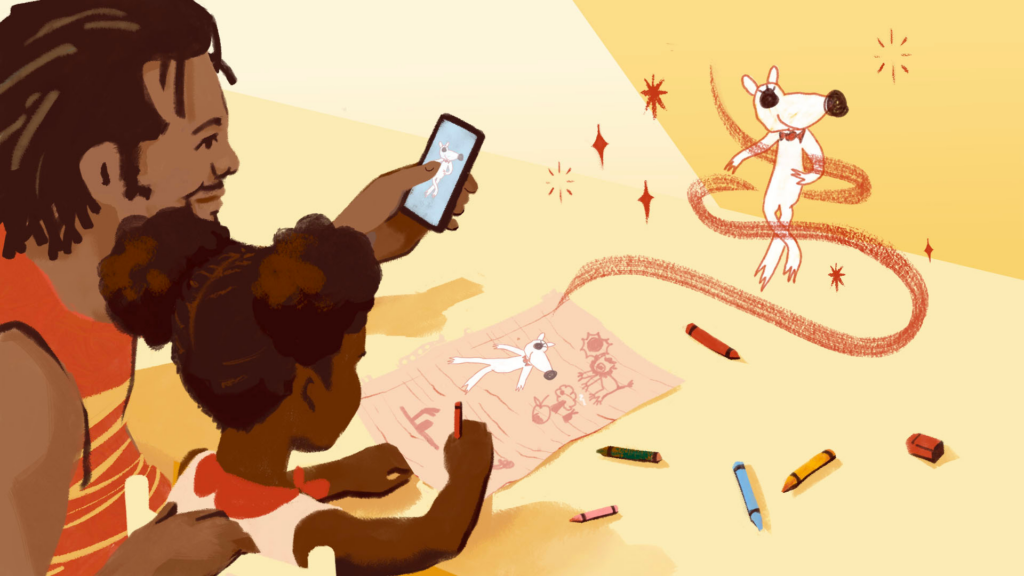
AI has broken down long-standing barriers in the field of digital innovation, enabling everyone to perform previously difficult jobs. The potential to use AI to animate still photos is one of the most fascinating of these developments. With a few clicks and the appropriate AI model, one can now accomplish tasks that formerly needed hours of hand animation effort or costly software tools.
Whether you’re a marketer, educator, content creator, or just someone who enjoys digital art, AI-driven image animation provides fascinating possibilities. For example, it may transform a simple selfie into a looping motion clip or make historical photos speak. This blog will discuss common use cases, available tools, how this technology operates, and how to get started.
What Is AI Image Animation?
Fundamentally, AI image animation uses machine learning models to add dynamic elements, motion effects, or facial expressions to a still image. These models can provide lifelike movement or transformations by interpreting visual characteristics such as the eyes, mouth, head position, background, or body structure.
For instance, you can:
- Make a face move to speak, blink, or grin.
- Include meteorological features in a landscape, such as clouds or rain.
- Make effects for a cinemagraph in which one element moves while the others remain motionless.
- To create parallax-style animation, mimic camera panning or zooming.
Motion prediction algorithms and generative AI enable all of this without the need for frame-by-frame manual editing.
How Does AI Animate Still Images?
1. Facial Landmark Detection :
AI recognizes a face’s main features, such as the eyes, nose, mouth, and jawline, and associates them with a reference video or audio input. This makes it possible for the image’s face to move, speak, or display emotion in a realistic way.
2. Generative Adversarial Networks (GANs) :
GANs are used to generate new frames based on learned motion. For example, Deep Nostalgia by MyHeritage uses GANs to animate old portraits with blinking and smiling.
3. Keyframe Interpolation :
This technique, which is frequently utilized in programs like Plotaverse and Photoshop’s timeline, calculates motion between two frames to imitate gradual panning or zooming.
4. Depth Mapping & Parallax :
AI estimates the depth of each part of an image and creates a 3D illusion by moving layers independently. Great for giving photos a cinematic feel.
AI Tools to Animate Still Images
1. D-ID :
Ideal for: Facial animation and talking head videos
- Add a voiceover or text-to-speech and upload a picture.
- The visage appears to be speaking as the AI animates it to fit the audio or script.
- well-liked in storytelling, marketing, and education.
Pros: Multilingual voice support and natural lip synchronization
Cons: Only available in portraits.
2. MyHeritage Deep Nostalgia :
Ideal for: Animating family or historical portraits
- AI can be used to add minor motions, such as blinking or rotating, to a color or black-and-white image.
- powerful on an emotional level for bringing ancestors to life.
Advantages: Easy to use and automated; no technical knowledge required
Cons: No voice and a small selection of animation types.
3. TokkingHeads (by Rosebud AI) :
Ideal for: entertaining animations on social media
- Enables you to add facial expressions, head movements, or voice input to a picture.
- Features backgrounds and avatars that are styled.
Pros: Character possibilities and imaginative templates
Cons: More whimsical and meme-focused than incredibly realistic
4. Photoshop + Animate / After Effects :
Ideal for: AI-supported custom parallax animation
- To animate backdrop layers or facial expressions, using Adobe’s Neural Filters and timeline tools.
Pros: Total control and expert outcomes
Cons: Needs some understanding of design
Tips for Getting the Best Results
- Use High-Resolution Photos
- Center the Face or Subject
- Keep Backgrounds Simple
- Match Voice Tone and Gender
- Use Subtle Animations
The Future of AI Image Animation
In the future, image animation should become more realistic, immersive, and interactive:
- Animation in real time using a camera or voice input
- 2D images to create 3D holographic avatars
- Dubbing and lip-syncing across languages
- Combining VR and AR to create compelling narratives
With the advancement of AI models, a single image might be animated to create personalized digital assistants, character-driven storytelling, or even multi-scene storylines.
One of the most intriguing ways to combine art and technology is to use AI to animate still photos. It allows artists a whole new medium to work with, makes pictures come to life, and transforms creativity into action. AI image animation allows for infinite inventiveness, whether you’re a professional marketer making talking avatars for audiences around the world or a hobbyist trying to make your family images grin.
Now is the ideal moment to get in and begin exploring, as there are an increasing number of tools that only need an image and a script.